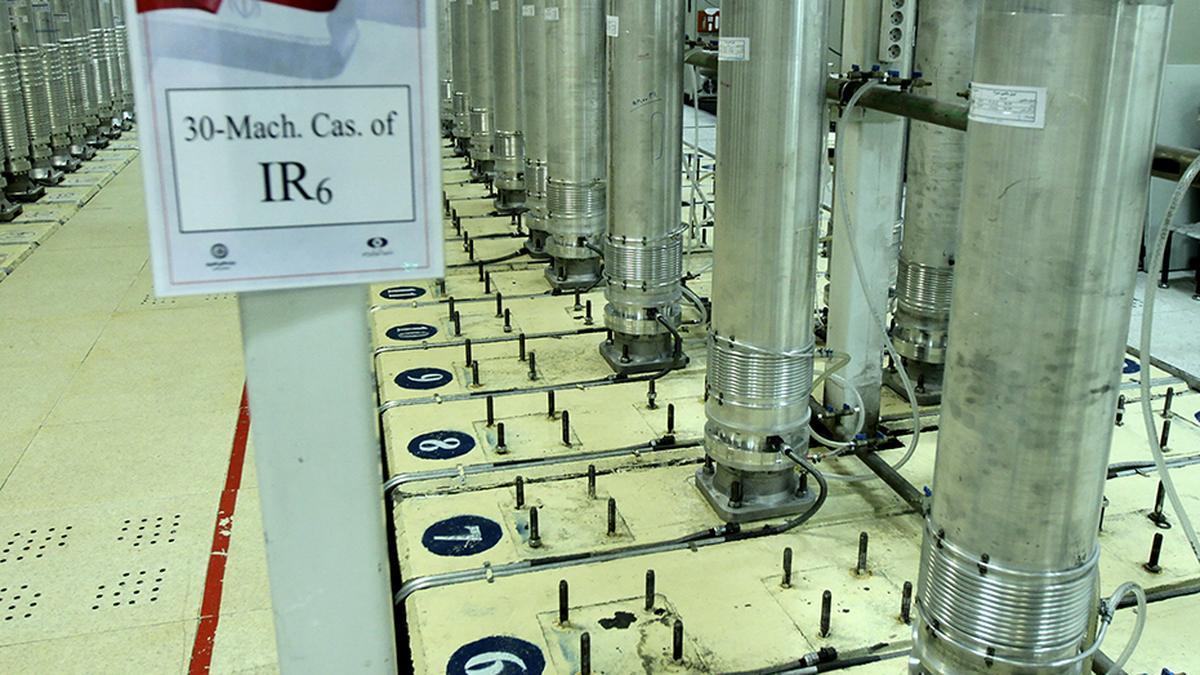This photo released on November 5, 2019, by the Atomic Energy Organisation of Iran shows centrifuges in the Natanz uranium enrichment facility in central Iran.
| Photo Credit: AP
On June 13, Israel said it commenced a campaign to strike “dozens” of nuclear and military targets in Iran even as the U.S. and Tehran were engaged in talks for the West Asian country to limit its nuclear programme in exchange for lowering sanctions.
Earlier this year, fears over Iran’s increasing capability to make nuclear weapons prompted Tel Aviv to clarify it won’t hold back from bombing Iran’s nuclear facilities.
Israel strikes Iran LIVE: Military official says nuclear targets hit; explosions heard across Tehran
Such a strike was however deemed unlikely should Israel lack U.S. backing. U.S. President Donald Trump had signalled he preferred the path of diplomacy first but also that military action would follow if talks collapsed.
“If it requires military, we’re going to have military,” Mr. Trump had said. “Israel will obviously be very much involved in that — it’ll be the leader of that.”
Israel’s strikes follow the Board of Governors of the U.N. nuclear watchdog resolving by vote on June 12 that Iran’s nuclear programme had breached the terms of a 1974 agreement for the first time since 2006.
Some estimates suggest Iran already has enough uranium to build five to eight nuclear warheads within months, if not sooner.
What we know about Iran’s programme
In seven points:
1. Natural uranium consists of 0.7% of the U-235 isotope and the rest is U-238. U-235 is the desirable fraction. Weapons-grade uranium usually needs to contain 90% or more of U-235. So the uranium needs to be enriched first, in devices called centrifuges.
2. Each centrifuge’s contribution is measured in separative work units (SWUs). Depending on the design of the centrifuge, about 250 SWU may be required to produce 1 kg of weapons-grade uranium from a feedstock of natural uranium.
3. By 2006, Iran had enriched uranium to 3.5%. Four years later, the U.N. watchdog, the International Atomic Energy Agency (IAEA), said Iran possessed 19.75% enriched uranium at its Natanz Fuel Enrichment Plant and in 2012 at the Fordow plant.
4. Under the 2015 Iran nuclear deal between Iran, the five permanent members of the U.N. Security Council, and the European Union, Iran would remove most of its centrifuges, limit enrichment to 3.67%, and cap its low-enriched uranium stockpile at 300 kg in exchange for easing international sanctions.
5. After Mr. Trump pulled the U.S. out of the deal in 2018, Iran resumed and subsequently bolstered its enrichment programme, reaching up to 60%.
6. This is a crucial threshold: the amount of SWUs required to enrich uranium from 60% to 90% is significantly lower than that required to enrich from 0.7% to 60%. Given the number of SWU/year available to Iran, the time between starting with 60% uranium feedstock and assembling a nuclear warhead could thus be a few months, if not lower.
7. Harvard University Belfer Center for Science and International Affairs scholar Hui Zhang has in fact said the country may be able to shrink the time between gaseous weapons-grade uranium coming out of centrifuges and a functional weapon to “probably less than three weeks”.
Israel is also believed to be a nuclear state but it has never confirmed nor denied whether it possesses nuclear weapons.
It also possesses the means to deliver nuclear warheads and has thus far refused to sign the 1968 Non-Proliferation Treaty.
Published – June 13, 2025 09:01 am IST
